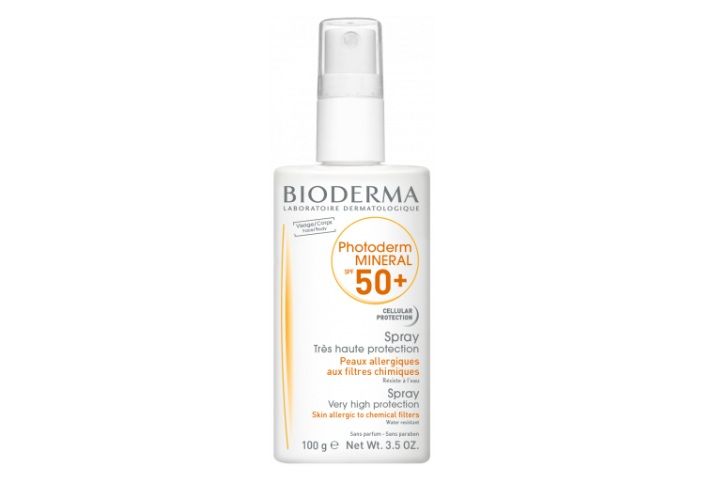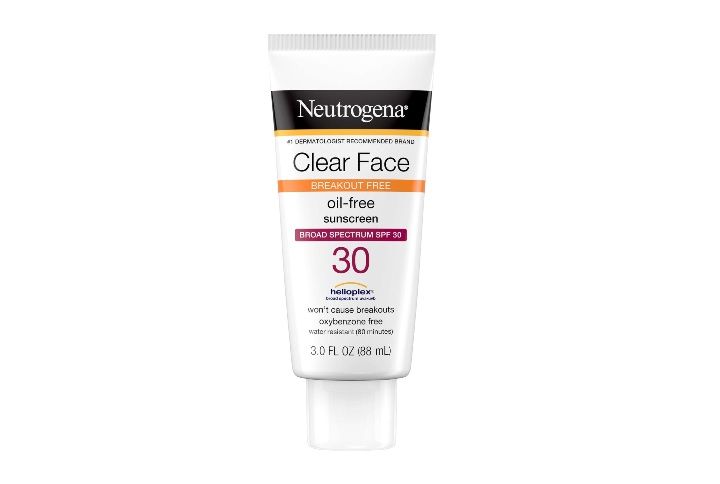
In case you haven’t already got the hint, wearing sunscreen all 365 days of the year is essential! Be it rain or shine it’s a crucial element to protecting your skin from the harmful rays of the sun and keeping it healthy. Yes, even on those cloudy days or whether you’re sitting indoors. While the daily routine of it is really that simple, on the other hand, like skincare, picking the right sun protection, can be confusing too. There’s a lot of information out there about sunscreen that can run circles around your head. Like the different types, formulas and who or what it’s best suited for. Physical, Mineral? Chemical? And what do all those numbers on the bottle mean? No need to get yourself in a tizzy. That’s what we’re here for! Ahead we break down all you need to know about different types of sunscreens and what to keep in mind to pick the best one for you.
Keep scrolling to understand the different types of sunscreens and picking the right one:
1. What are physical sunscreens?
Physical sunscreens are also referred to as mineral or natural sunscreens. They rely on minerals or ingredients like titanium dioxide and zinc oxide that rest on top of the skin, deflecting the sun’s harmful UV rays. They offer protection against both UVA and UVB rays. It literally blocks the UV rays by forming a physical shield that reflects rays away from the skin. Usually non-comedogenic, physical sunscreens are less likely to clog pores and are photostable. This basically means that they won’t degrade once the sun hits. Which makes it a great choice for those with acne-prone, oily, or sensitive skin.
However, mineral sunscreens can sometimes feel heavy because of their thicker consistency and can often leave a white or grey cast or can rub or sweat off easily. But more recent mineral sunscreens from brands nowadays have updated their formulas to be lighter and don’t leave a heavy film or cast on top of the skin. So it’s just a matter of finding the right product for your skin.

2. What are chemical sunscreens?
In comparison to the physical sunblocks, chemical sunscreens work by penetrating into the skin and changing UV rays into heat, then releasing that heat from the skin. They contain organic compounds like oxybenzone, avobenzone, homosalate, and octinoxate. More cosmetically elegant, they blend into the skin well with their lightweight formula covering a larger area at the same time. Which makes it easier to mix into other products like moisturiser and makeup. However, the one drawback is that chemical sunscreens often contain more ingredients than physical ones. These include preservatives, dyes and even fragrances that can potentially irritate the skin. But brands have come a long way and often formulate their products without oxybenzone which is a known irritant, leaving it in the past. Newer products on the market are usually free of this ingredient but remain just as effective. But it doesn’t hurt to always check the ingredient list before making your purchase.

3. How to pick the right one?
While both options have their pros and cons, this can be a tricky question. It really comes down to your skin type and comfort level. For example, if you’re prone to acne or breakouts, for either formula it’s best to look for one with non-comedogenic on the label. On the other hand, if you have darker skin you might end up opting for chemical sunscreen to avoid a white cast that comes with mineral sunscreen. But these too come with tinted options to solve the problem. Either way, whatever you choose, it’s always a good idea to do a patch test with new products before applying it all over your face.
Next up, the format type of your sunscreen comes into play. This refers to sprays, sticks, lotions, creams etc, and using the right amount. Of course, thicker creams and lotions will give you more coverage compared to aerosol sprays. And as a general rule of thumb make sure your entire body is evenly coated and don’t forget to reapply: If you’re spending time outdoors reapply your sunscreen every two hours. At the end of the day, you can wear whatever kind of sunscreen you like as long as it gets you to wear sunscreen. Because you need to be the one who enjoys wearing a generous coat of it.
Beauty Tip: Sometimes it’s best to use both physical and chemical sunscreens on your skin because you’ll get both kinds of protection. If your skin tolerates both forms, you can use a combo sunscreen to get the best of both worlds and the best protection. Or even simply use chemical sunscreen on your face and a physical version on your body!

Few factors to keep in mind:
No matter what sunscreen you choose there are a few crucial points you should always look out for :
- You need a minimum SPF factor of 30 for daily use. When applied correctly it protects you about 97 per cent of UVB ray
- Pick water-resistant formulas if you’re going to the pool or the beach. Keep an eye on how long it claims to last on wet skin and reapply as needed.
- Board spectrum sunscreens are essential as they protecting you against both UVA rays, which cause signs of ageing, and UVB rays, which cause burning.
- Be aware of expiration dates! If the sunscreen has expired or has gone bad for any reason you should ditch it in the trash. The ingredients in the formula can break down and render them ineffective which can potentially irritate the skin.
What kind of sunscreen do you prefer? Let me know in the comments below.
Join Malini’s Girl Tribe to be a part of the conversation.

